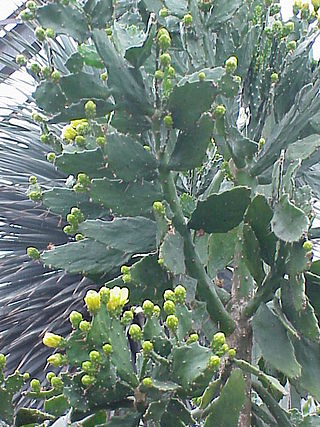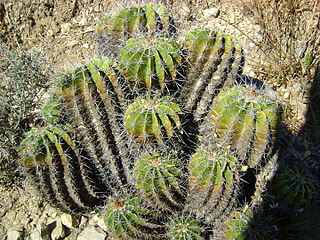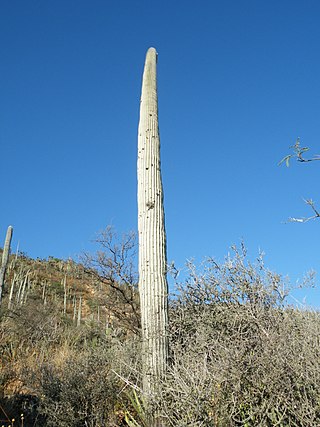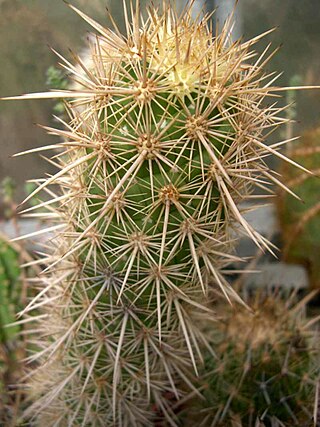
Brasiliopuntia is a genus in the cactus family, Cactaceae. It contains only one species, Brasiliopuntia brasiliensis.

Ariocarpus kotschoubeyanus is a species of plant in the family Cactaceae.

Ferocactus echidne is a barrel cactus in the genus Ferocactus. It is found in nature in Mexico. This cactus is known commonly as Sonora barrel, Coville's barrel cactus, Emory's barrel cactus, and traveler's friend. This plant is often sold as a houseplant.

Cleistocactus hyalacanthus is a species of columnar cacti in the genus Cleistocactus. The name comes from the Greek kleistos meaning closed because the flowers hardly open.

Ferocactus peninsulae is a barrel cactus in the genus Ferocactus of the family Cactaceae.

Cochemiea conoidea, common name Texas cone cactus or Chihuahuan beehive, is a species of cactus native to southern United States to central Mexico.

Soehrensia thelegona is a species of cactus in the Soehrensia genus.

Ferocactus flavovirens is a species of Ferocactus from Mexico.

Ferocactus gracilis, the fire barrel cactus, is a species of Ferocactus from Northwestern Mexico. This cactus gets its common name from the striking red coloration of its defensive spines and flowers.

Echinocereus bonkerae, also known as pinkflower hedgehog cactus, Bonker hedgehog, or short spined strawberry cactus, is a species of hedgehog cactus.

Punotia is a monotypic genus of flowering plants belonging to the family Cactaceae. The only species is Punotia lagopus.

Cephalocereus columna-trajani is a species of cactus from Mexico.

Ferocactus uncinatus is a species of Ferocactus found in Mexico and United States in Texas.

Cochemiea wrightii is a species of Cochemiea found in Mexico and the southern United States.

Cochemiea poselgeri is a species of Cochemiea found in Mexico

Cochemiea setispina is a species of Cochemiea found in Mexico.

Cochemiea halei is a species of Cochemiea found in Mexico.
Cochemiea pondii is a species of Cochemiea found in Mexico.

Echinocereus papillosus is a species of cactus native to Texas and Mexico.

Echinocereus barthelowianus is a species of cactus native to Mexico.























